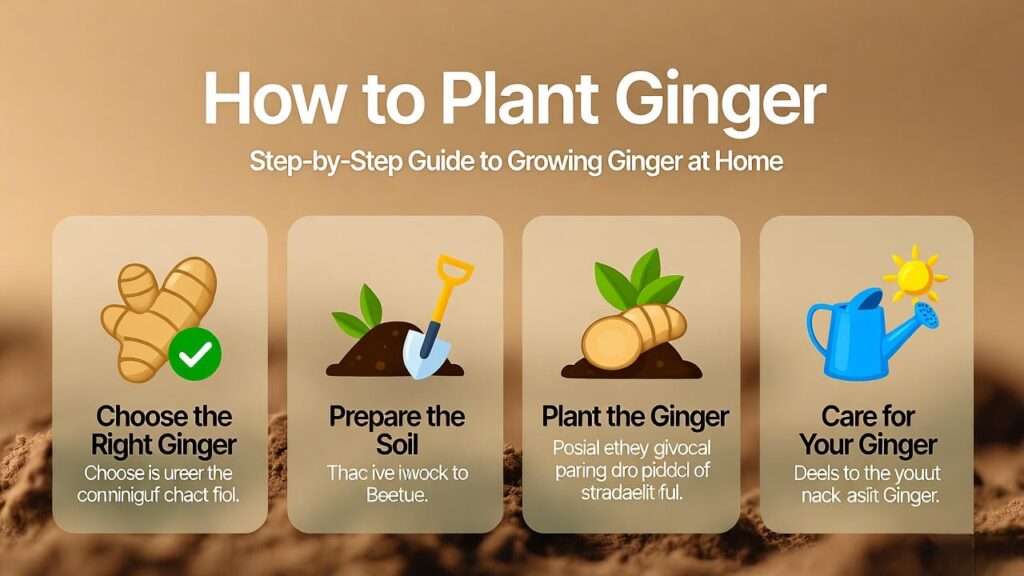Imagine slicing into a plump, aromatic ginger root you grew yourself, bursting with flavor and vitality—right from your backyard or kitchen windowsill! 🌞 Learning how to plant ginger is easier than you might think, and this comprehensive guide will walk you through every step to cultivate thriving ginger plants at home. Whether you’re a novice gardener or a seasoned green thumb, growing ginger offers culinary delights, health benefits, and the satisfaction of nurturing a tropical treasure. As a horticulturist with over a decade of experience in sustainable gardening, I’ve cultivated ginger in diverse climates and containers, and I’m excited to share expert insights to ensure your success. Expect actionable steps, troubleshooting tips, and insider secrets to transform your garden into a ginger haven! 🌴
Why Grow Ginger at Home? 🥗
Ginger (Zingiber officinale) is more than a kitchen staple—it’s a powerhouse of flavor, nutrition, and versatility. Here’s why growing your own is a game-changer:
- Fresher Flavor: Homegrown ginger is juicier and more aromatic than store-bought, elevating dishes like stir-fries, teas, and desserts. 🍴
- Cost Savings: A single rhizome can yield pounds of ginger, saving you money over time. 💰
- Health Benefits: Rich in antioxidants, ginger aids digestion, reduces inflammation, and boosts immunity. 💊
- Sustainability: Growing your own reduces reliance on mass-produced crops, supporting eco-friendly practices.
- Ornamental Appeal: Ginger’s lush green foliage adds a tropical vibe to gardens or indoor spaces.
Even beginners can succeed with ginger, as it’s forgiving and adaptable to various growing conditions, from backyards to balconies.
Understanding Ginger: The Basics 🌴
What Is Ginger? 🌱
Ginger is a tropical perennial native to Southeast Asia, grown for its spicy, edible rhizomes (underground stems). Part of the Zingiberaceae family, alongside turmeric and cardamom, it thrives in warm, humid climates but can be cultivated anywhere with proper care. The plant features tall, reed-like leaves and, occasionally, vibrant flowers, making it both functional and decorative.
Ideal Conditions for Growing Ginger ☀️
To ensure healthy growth, ginger requires:
- Climate: Warm, humid environments (70-85°F or 21-29°C) are ideal, but it adapts to indoor or container growing in cooler regions.
- Soil: Loose, well-draining, loamy soil rich in organic matter (compost or aged manure).
- Light: Partial shade or filtered sunlight (4-6 hours daily) to mimic its natural understory habitat.
- Water: Consistent moisture without waterlogging, as ginger loves damp but not soggy conditions.
Understanding these basics sets the foundation for a thriving ginger crop.
Step-by-Step Guide to Planting Ginger 🌾
Follow these detailed steps to plant ginger successfully, whether in a garden bed or a container.
Step 1: Choosing the Right Ginger Rhizome 🛒
The key to a bountiful harvest starts with selecting high-quality ginger rhizomes.
- What to Look For: Choose fresh, plump rhizomes with smooth, shiny skin and visible “eyes” (small growth buds, similar to potato sprouts). Avoid shriveled or moldy pieces.
- Where to Source: Purchase from local nurseries, trusted online suppliers, or even grocery stores (opt for organic to avoid growth inhibitors).
- Expert Tip: A 4-6 ounce rhizome can produce multiple plants, so start small if you’re new to growing ginger.
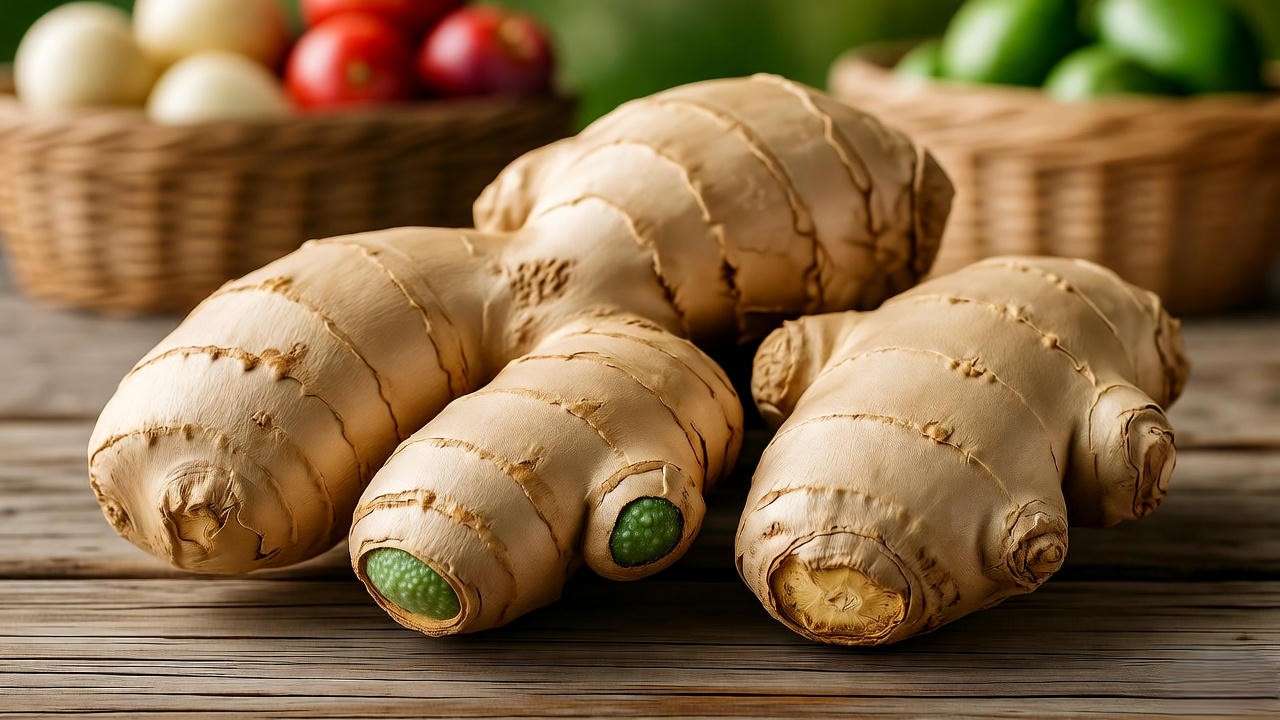
Step 2: Preparing the Rhizome for Planting ✂️
Proper preparation ensures your ginger sprouts quickly and healthily.
- Cutting: Use a clean, sharp knife to divide the rhizome into 1-2 inch (2.5-5 cm) sections, ensuring each piece has at least one or two growth buds.
- Pre-Sprouting: Soak the pieces in lukewarm water for 12-24 hours to encourage sprouting. Alternatively, place them in a warm, dark place (like a paper bag) for 1-2 weeks until small sprouts appear.
- Sanitization: To prevent rot, let cut surfaces dry for a few hours or dust with an organic fungicide (optional).
Step 3: Selecting the Perfect Planting Location 📍
Ginger thrives in specific conditions, so choose your planting site carefully.
- In-Ground vs. Containers:
- In-Ground: Ideal for USDA zones 9-11 or frost-free climates. Ensure the soil is well-draining to prevent rot.
- Containers: Perfect for colder regions or indoor gardening. Use a pot at least 12 inches deep and wide with drainage holes.
- Site Prep: Amend soil with compost or well-rotted manure to boost fertility. For containers, mix potting soil with 20-30% compost.
- Expert Tip: Raised beds improve drainage and are excellent for ginger in heavy clay soils.
Step 4: Planting the Ginger 🌍
Timing and technique are critical for successful planting.
- Timing: Plant in late winter or early spring when soil temperatures are above 55°F (13°C).
- Depth and Spacing: Plant rhizome pieces 1-2 inches deep, with buds facing upward, and space them 6-8 inches apart to allow room for growth.
- Orientation: Ensure buds are pointing up to encourage upward growth.
- Covering: Lightly cover with soil and water gently to settle.
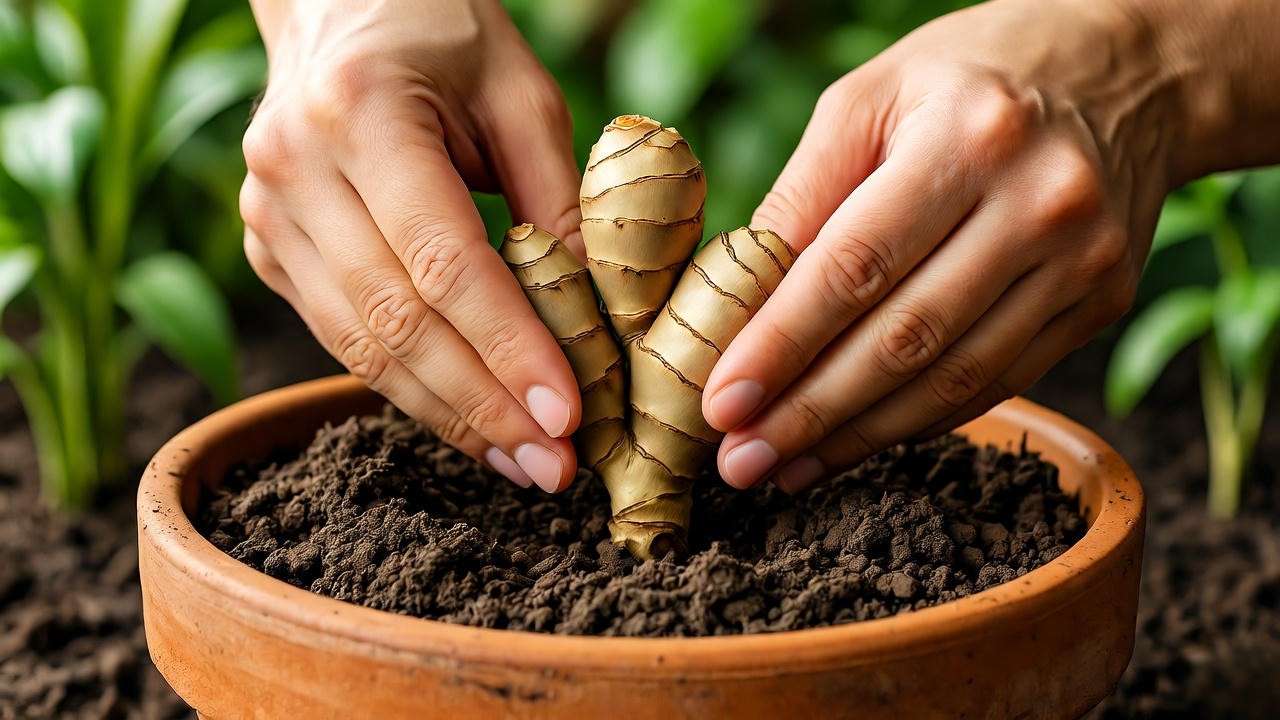
Step 5: Watering and Mulching 💧
Proper moisture and mulching promote healthy rhizome development.
- Watering Needs: Keep soil consistently moist but not soggy. Water when the top inch of soil feels dry.
- Mulching: Apply a 2-3 inch layer of organic mulch (straw, wood chips, or shredded leaves) to retain moisture, regulate soil temperature, and suppress weeds.
- Expert Tip: Check soil moisture regularly, especially in containers, to avoid overwatering, which can cause rhizome rot.
Caring for Your Ginger Plants 🌸
Once planted, ginger requires consistent care to thrive through its 8-10 month growing cycle.
Watering and Feeding 💦
- Watering Schedule: Water 1-2 times per week, adjusting based on rainfall or indoor humidity. Aim for moist, not waterlogged, soil.
- Fertilization: Feed monthly with a balanced organic fertilizer (e.g., 10-10-10) or compost tea to support growth. Avoid high-nitrogen fertilizers, which favor leaves over rhizomes.
- Signs of Imbalance:
- Overwatering: Yellowing leaves, mushy rhizomes.
- Underwatering: Wilting or browning foliage.
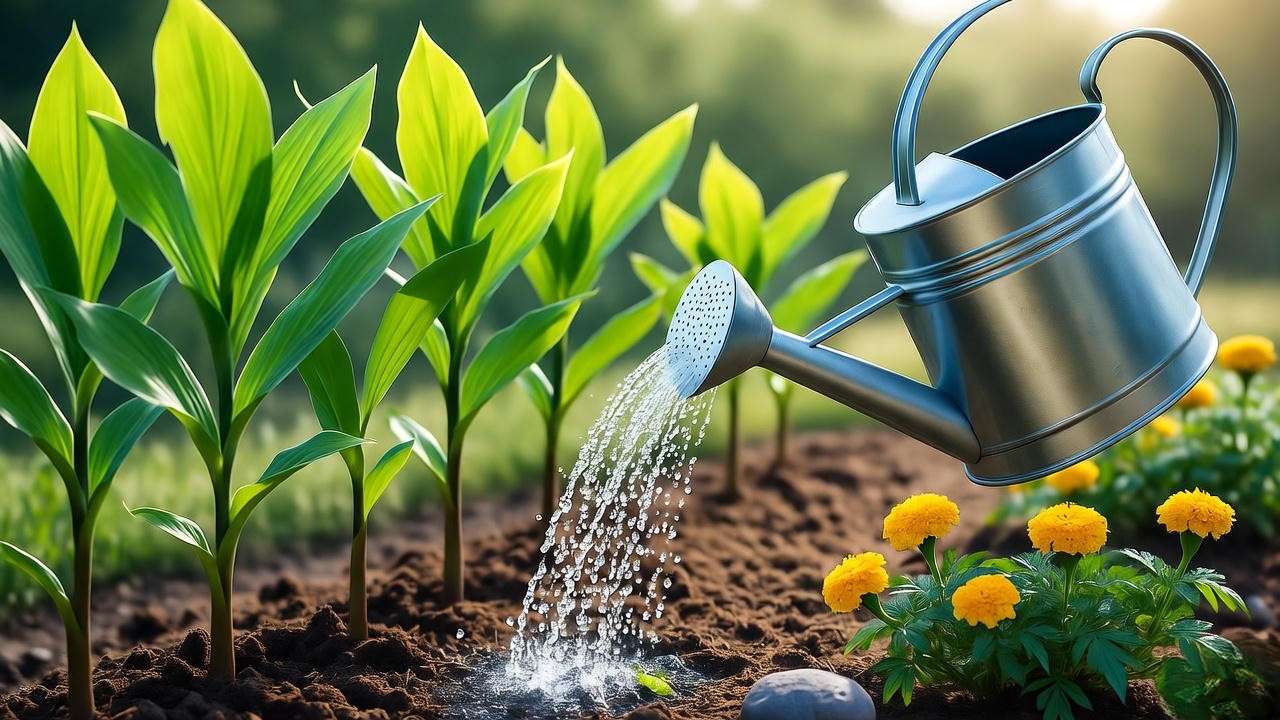
Light and Temperature Management ☀️
- Sunlight: Provide 4-6 hours of indirect or filtered light daily. Too much direct sun can scorch leaves, while too little slows growth.
- Temperature: Maintain 70-85°F (21-29°C). In colder climates, bring container-grown ginger indoors during winter or use a heat mat.
- Seasonal Adjustments: For outdoor plants, cover with frost cloth if temperatures dip below 50°F (10°C).
Pest and Disease Control 🐞
Ginger is relatively pest-resistant but not immune. Stay vigilant for:
- Common Pests:
- Aphids: Small, sap-sucking insects. Control with neem oil or insecticidal soap.
- Spider Mites: Tiny pests causing stippled leaves. Increase humidity and spray with water.
- Root-Knot Nematodes: Microscopic worms causing gnarled roots. Use crop rotation or solarization.
- Diseases:
- Root Rot: Caused by overwatering or poor drainage. Ensure proper soil conditions.
- Bacterial Wilt: Yellowing, wilting plants. Remove affected plants and sterilize tools.
- Organic Solutions: Companion plant with marigolds or basil to deter pests naturally.
Harvesting Your Ginger 🥔
When to Harvest ⏰
Ginger can be harvested at different stages depending on your preference:
- Baby Ginger: 4-6 months after planting, for tender, mild-flavored rhizomes.
- Mature Ginger: 8-10 months, when foliage yellows and dies back, for spicier, fully developed roots.
- Signs of Readiness: Check for plump, firm rhizomes by gently digging around the plant.
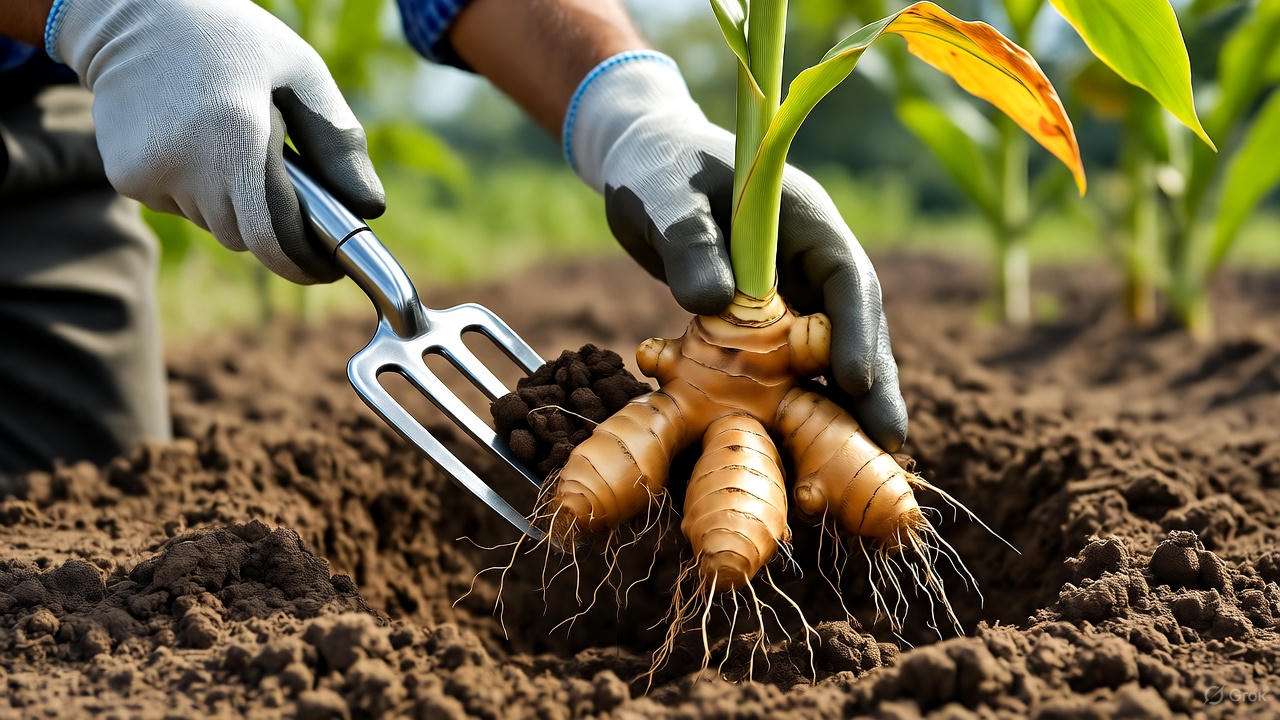
How to Harvest ✋
- Technique: Use a garden fork or trowel to carefully lift rhizomes, starting from the edges to avoid damaging the plant.
- Partial Harvesting: Harvest only what you need and replant remaining rhizomes for continuous growth.
- Post-Harvest Care: Brush off soil, rinse gently, and air-dry before storing.
Storing and Using Your Ginger 🥫
- Storage: Store fresh ginger in a breathable bag in the refrigerator for up to 3 months or freeze for longer shelf life.
- Culinary Uses: Grate into stir-fries, brew into teas, or blend into smoothies. Try homemade ginger syrup for desserts!
- Replanting: Reserve healthy rhizome pieces for your next planting season.
Troubleshooting Common Ginger Growing Issues 🔍
Even with the best care, challenges may arise. Here’s how to address them:
- Problem: Slow growth or no sprouting.
- Solution: Ensure rhizomes are fresh, soil is warm (above 55°F), and moisture is consistent.
- Problem: Yellowing leaves.
- Solution: Check for overwatering, poor drainage, or pest infestations like aphids.
- Problem: Small or underdeveloped rhizomes.
- Solution: Extend growing time, improve soil fertility with compost, or ensure adequate light.
Expert Tips for Maximizing Ginger Yields 🌟
- Companion Planting: Grow ginger alongside lemongrass, turmeric, or marigolds to enhance growth and deter pests.
- Raised Beds: Improve drainage and soil quality in heavy or clay-rich soils.
- Crop Rotation: Rotate planting locations every 2-3 years to prevent soil-borne diseases.
- Indoor Growing: Use grow lights (12-14 hours daily) for indoor ginger in low-light climates.
FAQs About Planting Ginger ❓
- How long does it take to grow ginger? 8-10 months for mature ginger, 4-6 months for baby ginger.
- Can I grow ginger indoors? Yes, in a warm, well-lit spot with a deep pot and proper care.
- What’s the best soil for ginger? Loamy, well-draining soil enriched with compost or organic matter.
- Can I use grocery store ginger? Yes, if it’s organic and hasn’t been treated with growth inhibitors.
- How do I know if my ginger is ready to harvest? Look for yellowing foliage and plump, firm rhizomes.
Conclusion: Grow Your Own Ginger with Confidence! 🎉
Growing ginger at home is a rewarding journey that yields fresh, flavorful roots and a touch of tropical beauty. By following this step-by-step guide, you’re equipped to plant, nurture, and harvest ginger like a pro. As a horticulturist, I’ve seen firsthand how ginger transforms gardens and kitchens, and I’m confident you’ll love the process as much as the results. Start today, and share your ginger-growing adventures in the comments below! Explore our related articles on turmeric, companion planting, or sustainable gardening for more inspiration. 🌱

